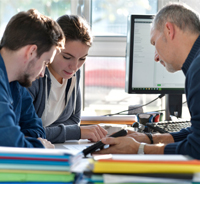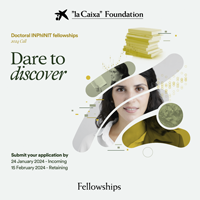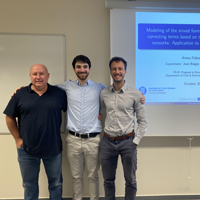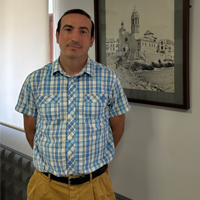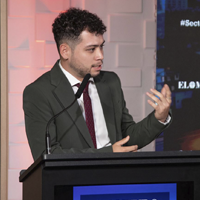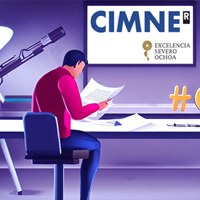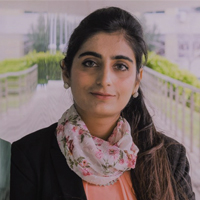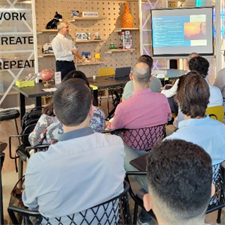research
Interview to Xavier Tort Farrés, a new member of the SECCO2 project team
We interviewed Xavier Tort Farrés, a newcomer researcher at CIMNE. This summer, he joined the team working on the SECCO2 project. He is a civil engineer from the Universitat Politècnica de Catalunya (UPC BarcelonaTech), where he is currently pursuing his Master’s Degree in Civil Engineering. Throughout his academic journey, he has developed a growing interest in Structural Analysis and Computational and Geotechnical Engineering, always striving to understand the mathematical and physical concepts behind these subjects.
 "I began my professional career in a construction company and, despite having learned how to apply the concepts taught, a part of me has always leaned towards the fundamentals of engineering", he explains. As he had the opportunity to complete the Bachelor’s Final Thesis on a topic ["Advances in the numerical modeling of interface elements for pullout tests in reinforced concrete"] related to this research path, he could confirm his initial interest in this field and in the development of new numerical methods. He emphasizes that his supervisors, Ignasi de Pouplana and Eugenio Oñate, were a very helpful guides during the entire thesis period.
"I began my professional career in a construction company and, despite having learned how to apply the concepts taught, a part of me has always leaned towards the fundamentals of engineering", he explains. As he had the opportunity to complete the Bachelor’s Final Thesis on a topic ["Advances in the numerical modeling of interface elements for pullout tests in reinforced concrete"] related to this research path, he could confirm his initial interest in this field and in the development of new numerical methods. He emphasizes that his supervisors, Ignasi de Pouplana and Eugenio Oñate, were a very helpful guides during the entire thesis period.
-The SECCO2 project is developing an open-source software aimed at facilitating the decision-making process for engineers regarding the storage of CO2 in saline aquifers. What are the main challenges of this project?
One of the main challenges of this work is the accurate definition of the computational domain. The boundaries and composition of the targeted saline aquifers are uncertain. Furthermore, the discretization of such a domain is typically very difficult due to the presence of very thin faults.
This is also very complex because it involves formulating a solution that couples the mechanical, hydraulic, thermal, and chemical formulations. The tool must model both the continuum medium, using finite elements, and the discontinuities, using interface elements.
These discontinuities can appear due to the injection of CO2, or they can exist due to faults or geological formations encountered in the terrain. The knowledge of these natural discontinuities is uncertain; hence, it also presents a challenge in this project.
Finally, one of the main goals of this project is to extend the existing formulation to model the results considering a multiphase flow analysis, both in a continuous and discontinuous media.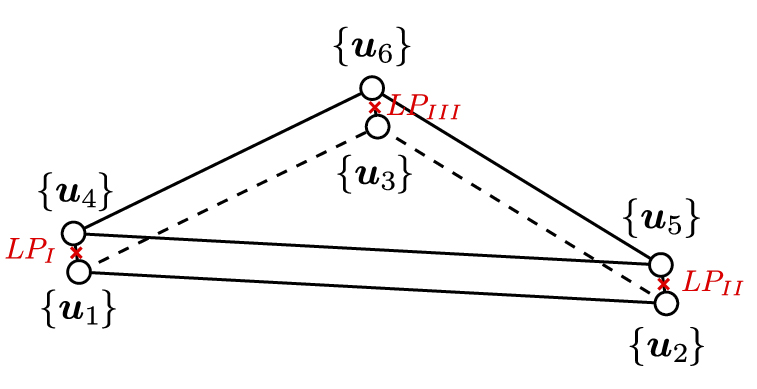
-What advantages does this application brings to the industry, the scientific community, and society in general?
The ultimate goal of this project is to build a tool that can assist engineers in the processes of reducing the concentration of CO2 in the atmosphere to limit the global warming.
For the industrial sector, this project will provide an accurate tool to model the CO2 injection process, thus improving the decision-making process with an enhanced approach. Furthermore, projects of this kind promote improvements within the industrial world, moving towards more sustainable solutions.
Regarding the scientific community, this project will expand the existing knowledge of multiphase flow in porous media and THMC formulation. Moreover, applying this new formulation to interface elements opens the door to addressing new problems.
Finally, this project will provide sustainable solutions to address climate change and reduce its known impacts, thereby improving the overall well-being of society. 
-What is the profile of the engineer who chooses to pursue research?
The way I see it, the profile that an engineer must have to pursue research can be described with several qualities. First and foremost, they must be someone who aims to achieve a high level of technical expertise in their areas of interest, along with being curious and persistent in their work.
Furthermore, aside from their academic background, if someone is inclined to enter the world of research, it is crucial to have passion and ambition. Excelling in academic records is not necessarily enough or even required. To me, the most important aspect of being a researcher is persistence and vocation, both qualities linked with passion.
-You have combined your work at CIMNE with that of co-president of the Futur Civil Forum, an initiative that acts as a bridge between engineering students and the companies. Do you think the triangular relationship between university, research centres, and industry is in good shape?
Throughout the years that I have been involved with the Futur Civil Forum, not only as co-president, I have been gained insight into how this triangular relation you mentioned works.
On one hand, I must say that research centres have a solid relationship with the university itself, communicating and sharing their projects and developments through professors who work in both research and university.
The same holds true for the university and companies. In recent years, I have noticed that a wide range of enterprises come directly to the School to hire students who have completed their Master’s or Bachelor’s degree.
However, on the other hand, I believe that companies should recognize the work done by research centres more. Sometimes, they perceive these centres as purely academic, which is not true. As I see it, if companies valued or truly understood the kind of work conducted in research, they would want to collaborate and engage these centres more.


